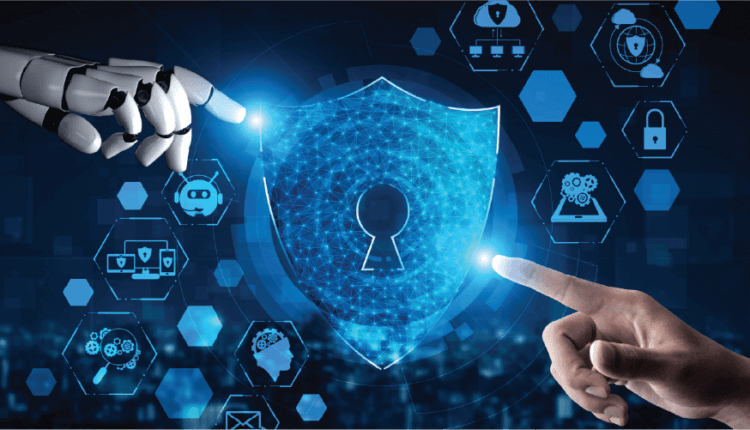In an era where digital threats loom large, the evolution of AI stands as a beacon of hope in safeguarding our cyber landscape. With its ability to swiftly analyze vast troves of data and identify anomalies, AI fortifies our defenses with proactive threat detection and response. By continuously learning and adapting, AI-driven cybersecurity systems stay ahead of sophisticated adversaries, making our digital realm a safer space for innovation and progress. As we embrace this evolution, collaboration between human expertise and AI prowess becomes paramount, ensuring a resilient defense against the ever-evolving cyber threats of tomorrow. AI has emerged as a game – changer in this realm, revolutionizing the way we protect our digital assets.
AI, or artificial intelligence, refers to the simulation of human intelligence processes by machines, typically computer systems. This encompasses tasks such as learning, reasoning, problem-solving, perception, and language understanding. AI systems are designed to perform tasks that would normally require human intelligence, often more efficiently and accurately, by processing large amounts of data and recognizing patterns. AI can be categorized into two types: narrow AI, which is designed for a specific task, and general AI, which would have the ability to understand, learn, and apply knowledge across various tasks akin to human intelligence.
Cybersecurity involves protecting computer systems, networks, and data from unauthorized access, cyberattacks, and other digital threats. It encompasses a range of practices, technologies, and processes designed to safeguard information and ensure the confidentiality, integrity, and availability of data. Cybersecurity measures include installing firewalls, antivirus software, and encryption tools, implementing access controls and user authentication mechanisms, conducting regular security audits and assessments, and educating users about safe online practices. The goal of cybersecurity is to mitigate risks and vulnerabilities in digital systems and prevent or minimize the impact of cyber incidents.
The digital realm refers to the vast interconnected space created by digital technologies, encompassing everything from the internet and computer networks to digital devices and platforms. It’s a virtual environment where people interact, communicate, conduct business, and access information online. The digital realm includes various facets of cyberspace, such as websites, social media platforms, online marketplaces, and digital services. It’s a dynamic and evolving ecosystem that shapes how we live, work, and interact in the modern age.

To talk about the critical analysis, we can focus on the several aspects which are the hot cakes of today’s threats. Let’s focus on the primary critical analysis which includes assessment of AI capabilities, exploration of Ethical Implications, evaluation of collaboration between human and AI, analysis of future trends and implications, discussion of limitations and challenges. Overall, a critical analysis of “Defending the Digital Realm: AI’s Evolution in Cybersecurity” would involve evaluating the accuracy, completeness, and depth of the essay’s discussion on AI’s role in cybersecurity, while also considering the broader implications and ethical considerations associated with AI-driven security measures.

AI has brought about a significant change in cybersecurity. AI-powered systems can analyze vast amounts of data to identify patterns and anomalies indicative of cyber threats. AI algorithms can learn normal user behavior within a network or system and flag deviations that may indicate a security breach. By continuously adapting to evolving threats and user behaviors, AI-driven behavioral analysis tools enhance threat detection accuracy and reduce false positives. AI enables the automation of routine cybersecurity tasks such as incident response and threat containment. Automated systems can analyze and respond to security incidents in real-time, minimizing the response time and reducing the workload on human security teams. AI algorithms can analyze email content, sender behavior, and other contextual factors to identify phishing attempts with high accuracy. By recognizing subtle patterns and indicators of phishing attacks, AI-powered systems help organizations prevent successful phishing attacks and protect sensitive information. AI enhances authentication mechanisms by continuously assessing user behavior and risk factors to determine the appropriate level of access. Adaptive authentication systems can detect suspicious login attempts and prompt for additional verification methods, such as biometric authentication or multi-factor authentication, to prevent unauthorized access. AI-driven predictive analytics can forecast potential security threats based on historical data, industry trends, and emerging vulnerabilities. By proactively identifying and addressing security risks before they manifest, organizations can strengthen their cybersecurity posture and mitigate the impact of future attacks.
Cybersecurity is in need and will be in need for future growth in Information Security due to several compelling reasons. AI-powered systems can analyze vast amounts of data in real-time, enabling organizations to identify and respond to threats at a speed and scale that human analysts alone cannot achieve. AI algorithms can adapt to these evolving threats by continuously learning from new data and updating their detection mechanisms to stay ahead of attackers. AI technologies can augment human expertise by automating routine tasks, enabling security analysts to focus their efforts on more strategic activities such as threat hunting, incident response, and policy development. AI-powered systems can analyze network traffic, user behavior, and system logs in real-time, enabling organizations to detect and respond to security incidents as they occur, minimizing the time between detection and remediation. AI enables the development of adaptive defense mechanisms that can dynamically adjust to new threats and vulnerabilities, enhancing the resilience of organizations’ cybersecurity defenses. By leveraging AI for threat intelligence, risk assessment, and security analytics, organizations can gain a deeper understanding of their cybersecurity posture and make informed decisions to mitigate risks and prioritize security investments. Overall, AI is essential for the future growth of cybersecurity because it enables organizations to overcome the challenges posed by the evolving threat landscape, scale their security operations, augment human expertise, and respond to threats in real-time with adaptive defense mechanisms. By integrating AI technologies into their cybersecurity strategies, organizations can enhance their ability to protect sensitive data, preserve trust in their digital infrastructure, and stay resilient against emerging cyber threats.
The Future of AI in Cyber Security

To Conclude, AI’s Evolution in Cybersecurity” offers a compelling exploration of the transformative potential of artificial intelligence (AI) in safeguarding our digital landscape. By elucidating AI’s capacity to enhance threat detection, response, and mitigation, underscores the critical role of AI-driven technologies in fortifying cybersecurity defenses the evolution of AI in cybersecurity presents both tremendous opportunities and significant challenges in defending the digital realm. As AI technologies continue to advance, they offer unparalleled capabilities in threat detection, response, and mitigation, empowering defenders to stay ahead of sophisticated adversaries. However, with these advancements come ethical considerations, potential biases, and the need for robust governance frameworks to ensure responsible AI deployment. Despite these challenges, the symbiotic relationship between AI and cybersecurity holds immense promise in safeguarding our increasingly interconnected world. By fostering collaboration, innovation, and a commitment to ethical AI practices, we can harness the full potential of AI to protect critical digital infrastructure and preserve trust in our online ecosystems for generations to come.
Article by:

Dr. Ayub Bokani, Lecturer and Research Scientist at Central Queensland University (CQU), Sydney, Australia

Dr. Suman Thapaliya, Head of IT Department, Texas College, Nepal









Comments are closed.